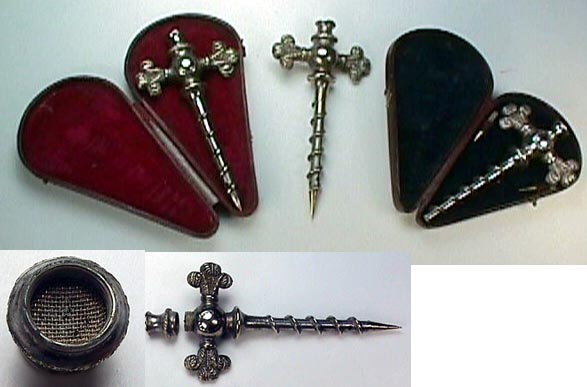

Anthony Vance: I recently purchased a gift for a friend. It is a 02 Tap marked, Maw & Son London...plain brass and in superb condition...never plated...Prince of Wales Feathers...4 inches....Could you please tell me what I bought? I realize this is a champagne opener, but have no idea of how it was used or the history of such an object.Ron: You have purchased a very collectible late 19th century English tap used to take a small amount of liquid from a carbonated beverage bottle.
They are usually referred to as a Champagne Tap and came into vogue in the early 19th century. Maw & Son manufactured at least three different versions but I am sure they must have made others.
All three shown above are silver or nickel plated brass and have similar valve heads with Prince of Wales Feathers on the petcock handles and are all marked "MAW & SON LONDON". The threaded flared discharge nozzle secures a fine screen to filter debris from the champagne, wine or other liquid. The screens are usually missing as they would plug easily, be removed, and not be replaced.
1. The first example 3 7/8" long is silver plated brass in a case with a hollow archimedean helix with two holes in the tip.
2. Second is a similar tap 4 1/8" long in nickel plated brass with a slightly longer smaller diameter shaft with a much more pointed sharp tip possibly to make it easier to penetrate a cork.
3. The third example is silver plated brass 4" long and has two detachable tips or points in a fitted case. The point or tip falls into the bottle when the helix passes through the cork into the interior to allow the passage of liquid into the hollow shaft. They are often missing as they were left in the bottle and forgotten or misplaced.
The tap, with the petcock /valve closed, was screwed into a cork in a bottle of alcoholic/nonalcoholic carbonated beverage. The bottle was turned upside down to cover the end of the tap, the valve opened, and the contents were discharged by the pressure in the bottle. When the desired amount was removed the valve was closed and the tap was left in the bottle to maintain pressure.